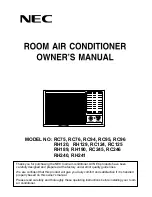
1
revised 10/09
Smog-Hog
PSH Series Model
tHiS ManuaL iS coMPiLeD for GeneraL
inforMation anD DoeS not neceSSariLy
rePreSent aLL oPtionS or acceSSorieS.
contact uaS cuStoMer SerVice
1-800-252-4647 for aDDitionaL inforMation
1. INTROdUCTION
you are about to install and operate a SMoG-HoG®
PSH operating on the principle of electrostatic
precipitation. PSH removes submicron, airborne
particulate with high efficiency and at a uniquely low
expenditure of energy. With proper handling and
installation, the PSH becomes a powerful tool in
controlling objectionable emissions from a wide range
of processes. the PSH can vary in options, consisting
of working groups of collection components which may,
in turn, be preceded or followed by complimentary
conditioning equipment. the PSH may take the form of
a simple component cabinet for inclusion in a large air
handling system or may be a self-sufficient air pollution
control package. Since the PSH generally becomes an
integral part of a process exhaust network, installation
should be carefully planned, starting with mechanical
layout drawings and electrical wiring diagrams provided
by united air Specialists, inc. (uaS). reading this
manual is important to the successful installation and
operation. the PSH Series has been built to rigid
specifications. as with all precision equipment, the
system requires periodic care and maintenance. this
manual contains instructions for standard maintenance
and manual cleaning of components. if the system is
equipped with in Place cleaning, there is a separate
owner’s manual. if assistance is required please contact
customer Service, united air Specialists, inc., 4440
creek road, cincinnati, ohio 45242, 1-800-252-4647.
1.1 description of Operation
the PSH is a two-stage, Penney-type electrostatic
precipitator used for removal of submicronic
hydrocarbon emissions of smoke and other airborne
contaminants. the two “stages” consist of an ionizing
section and a collecting section. each ionizing section
consists of a series of (10 mil) wires charged to a
high Dc voltage and centered between a like series
of grounded plates. this high voltage differential
generates an intense electrostatic field where airborne
particles are “ionized,” i.e., positive polarity. each
collecting section consists of a large number of parallel
cell plates, alternately charged at high Dc voltage
(the same polarity as the ionizer but about half the
voltage magnitude) and ground potential, thus forming
a magnetic field. charged particles are simultaneously
repelled by the cell charged plates (smaller dimensional
plates) and attracted to cell ground plates (large
dimensional plates). the result being a highly efficient
removal of charged particulate from the airstream as it
passes through the electrostatic precipitator. the total
current to both the ionizer and collector cell circuits
is below 5 milliamps which is non lethal. ionizer and
collection cell components are usually preceded and/
or followed by mesh filters to assure even distribution
of air, at low velocity. air movement is provided by a
system blower located behind the ionizer and collector
cell components that exhausts cleaned air at a specified
cfm rate. More complex systems can include other
conditioning equipment.
1.2 System definitions
PSH Series is designed for rigorous, often continuous,
smoke and particulate removal duty. the system
includes mechanical pre filters (as applicable), ionizer
and collector cell components, power pack enclosures
and pre/after filters. the PSH has been tested to
operate in accordance with national listing standards
of agencies such as underwriters’ Laboratories (uL)
and etL, with local approvals from selected cities as
required. PSH units are designed for installation in
customer ducting where other system components,
including the blower, may be provided by others. PSH
systems can include blowers, skids and other factory-
assembled equipment, which arrives in the field ready
for installation.
1.3 Unit Nomenclature
PSH systems may include various combinations of
features connected in series in the direction of airflow.
the PSH’s configuration code is defined with a series
of letters and numbers. refer to figure 1. on “single-
wide”, (the width of one module is a group of two
ionizers and two collector cells in series) the access
doors to collecting components face the operator as
air flows from left to right. opposite side access right
to left is also available. “Double wide” (the width of
two modules placed side by side) have access doors
on both sides, each door accessing one module, left
to right, and right to left in one system. air which flows
through one set of ionizer(s) and collector cells will
make a single cleaning “pass.” When an application
dictates, multiple passes can be placed in series in
the direction of airflow. component identification is
illustrated in figures 2 and 3.
Figure 1
PSH NOMENCLATURE
Number of Tiers High
(1 through 6)
One Module = Group of 2 Ionizers and 2 Cells
Number of Cells Wide
(2 or 4)
Number of Passes
(1, 2 or 3 Passes in Series)
PSH–64–3










































